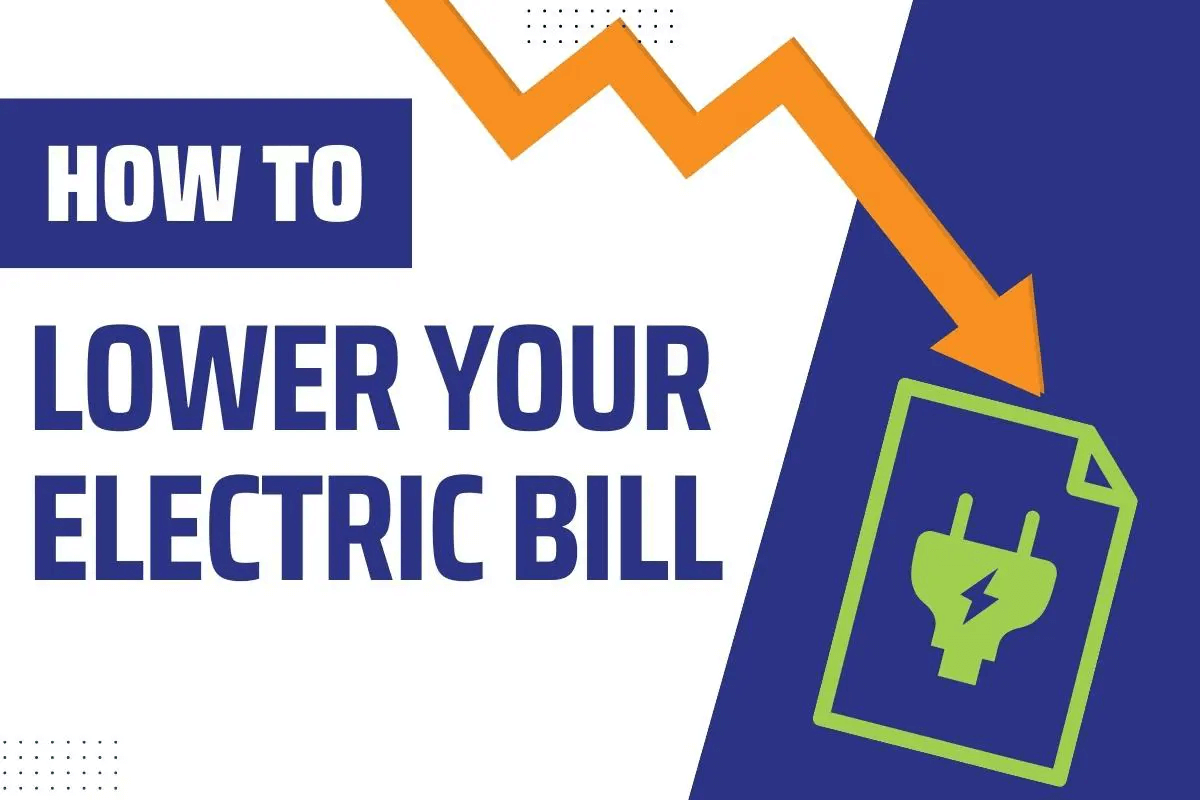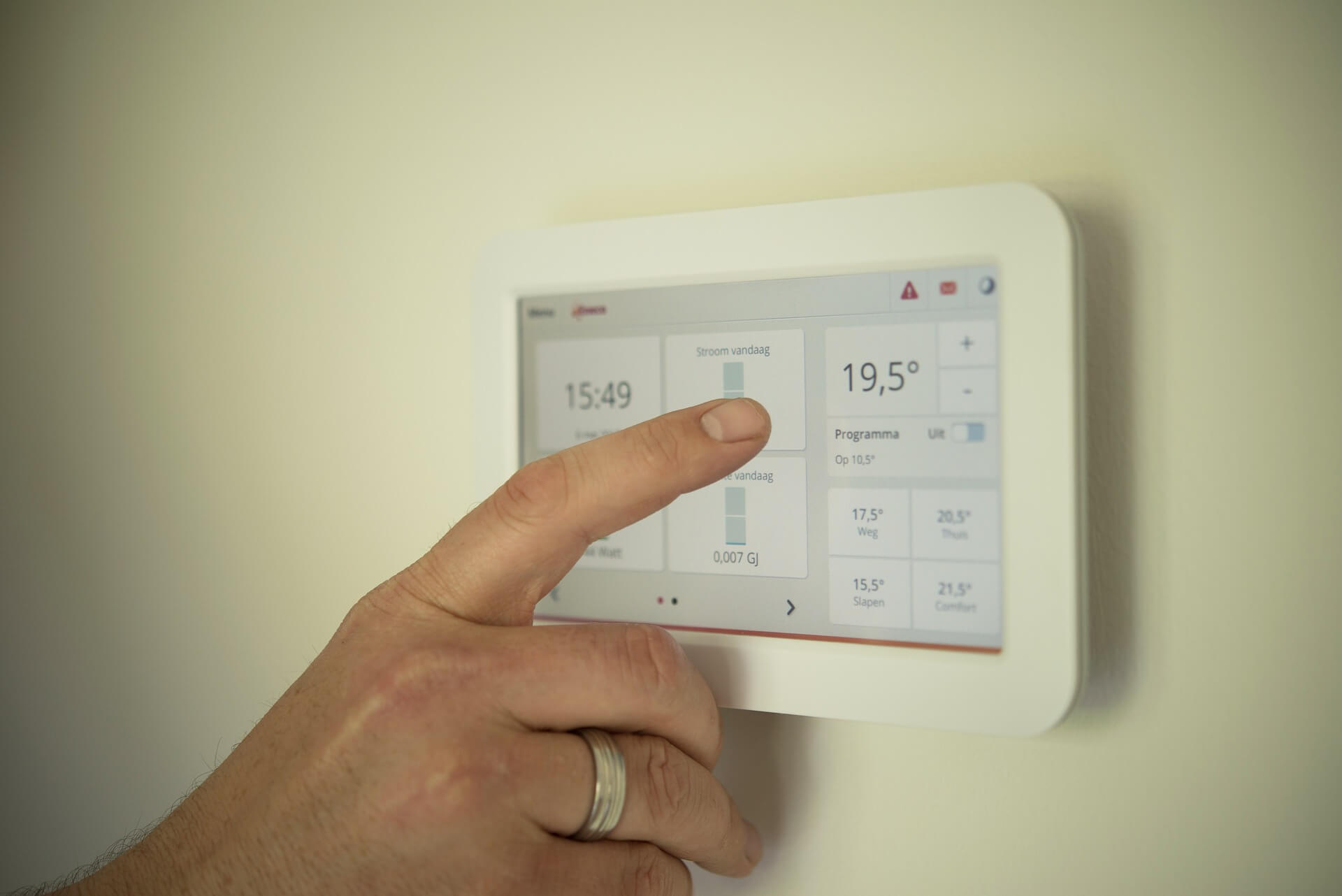Unlock the Power of Energy Saving
With energy prices increasing every day, it is now very important to find ways to reduce costs at home. In this article, we are going to present some practical tips that are easy to implement in your daily life, covering various aspects of home energy usage, including heating, appliances, and lighting. By following these suggestions, you can enjoy a comfortable living environment while minimizing your energy consumption and reducing your carbon footprint. No matter your budget or living situation, these tips are designed to be accessible and adaptable for everyone, ensuring that you can make a positive impact on both your wallet and the planet. Read on to discover how you can transform your home into an energy-saving haven and start reaping the benefits today.

How to save energy through Simple changes
Keep doors closed
To retain heat, always keep doors closed when you are in a room. This helps maintain a comfortable temperature without overworking your central heating system.
Line your curtains with budget-friendly fleece
Thick curtains, particularly those with insulation or lining, help keep the warmth indoors. If you’re on a budget, you can line your curtains with inexpensive fleece blankets (available from around £2). Just ensure the fleece material is fire retardant. Alternatively, consider purchasing curtains with built-in thermal lining.
Install curtains on interior doors
To minimize cold and retain heat in specific rooms, consider hanging curtains on interior doors, such as the one between your living room and hallway. This may require some DIY skills and initial investment but will help prevent heat loss.
Install pet doors on internal doors if you have pets
Although installing pet doors on your internal doors comes with an upfront cost, doing so allows you to keep interior doors closed, reducing drafts while still providing your pets with the freedom to roam.
Apply plastic wrap to windows for DIY draft-proofing
Surprisingly, applying a layer of plastic wrap to your windows can trap a thin layer of air, preventing heat from escaping. You can use any transparent, airtight material, not just plastic wrap, but consider using specialist secondary glazing film for better results. This method is more effective for single-glazed windows, but adding a third layer to double-glazed windows may provide some benefits.
Use energy monitors to track appliance energy usage
 If you want to know precisely how much energy an appliance consumes, invest in an energy monitor (available for as little as £15). Plug your appliance into the energy monitor and then plug the monitor into a wall socket. The monitor will display information on the appliance’s electricity usage, and some models even calculate the cost. Keep in mind that measuring multiple appliances requires multiple monitors or measuring each appliance individually.
If you want to know precisely how much energy an appliance consumes, invest in an energy monitor (available for as little as £15). Plug your appliance into the energy monitor and then plug the monitor into a wall socket. The monitor will display information on the appliance’s electricity usage, and some models even calculate the cost. Keep in mind that measuring multiple appliances requires multiple monitors or measuring each appliance individually.
Take advantage of sunlight
During the day, open curtains and blinds to let in natural light and heat. Close them once it starts getting darker in the evening to retain warmth.
Charge solar lights outdoors and bring them inside at night
Using solar lights indoors instead of electric lamps can help save on your electricity bill. Charge the solar lights outside during the day and bring them inside at night. In winter, when sunlight is limited, position the lights where they can receive the most sunlight, free from obstructions like trees and buildings. Alternatively, try charging the lights indoors through a window during the day.
Adjust your TV’s settings to improve efficiency
In the current scenario, a person spends around four hours per day watching TV, which consumes a significant amount of energy. Most modern TVs have power-saving settings that adjust screen brightness to minimize power consumption. If your TV lacks such settings, manually lower the brightness and contrast. Some newer TVs also have sensors that detect ambient light and adjust screen brightness accordingly, further conserving energy. Additionally, change the picture mode to the most energy-efficient setting, usually labelled ‘standard.’
Avoid charging your mobile phone overnight
A typical mobile phone takes about three hours to fully charge. Charging your phone overnight wastes energy. Instead, charge your phone throughout the day and unplug it once it’s fully charged. Adjust settings like screen brightness, battery saving mode, and airplane mode to speed up charging and extend battery life. Turning off your phone while charging can also reduce charging time.
Use solar portable charging banks for your devices
Solar-powered charging banks are an eco-friendly alternative for charging devices like phones and tablets. They are generally affordable and eliminate the need to plug your devices into the mains every time they require charging.
Clean your tumble dryer filters regularly
Clean the filter that captures dust, fluff, and lint in your tumble dryer before each use. A clean filter ensures your dryer operates efficiently, without having to work harder to dry your clothes. If possible, avoid using the tumble dryer altogether to save even more energy.
Replace old or broken appliances with energy-efficient ones
When it’s time to replace old appliances, opt for energy-efficient models within your budget. In the UK, electrical appliances have energy rating labels, with ‘A’ being the most efficient and ‘G’ the least. The Energy Saving Trust provides information on appliance energy labels, while Sust-it ranks products based on energy consumption.
Install reflective panels behind radiators
Reflective panels placed between the radiator and the wall can prevent heat loss through external walls. While you can use tin foil as a makeshift solution, actual reflector panels are more effective and durable.
Add radiator shelves to prevent heat from escaping
Radiator shelves installed above radiators can help redirect heat back into the room, improving heating efficiency.
Avoid blocking radiators
If possible, move large furniture pieces away from radiators. Objects like sofas or chests of drawers can obstruct heat flow into the room, forcing your central heating system to work harder to maintain the desired temperature.
Invest in a radiator brush for efficient cleaning
Radiator brushes or thin dusters that can reach small openings at the top of radiators can help keep them clean and running efficiently.
Consider using radiator fans and heat diverters
Radiator fans or boosters can redirect heat across the room, preventing heat from rising and escaping. They are easy to install on most standard radiators and can be moved between radiators as needed. However, they require electricity to operate and are not suitable for storage heaters or oil-filled radiators.
Defrost your freezer
A frosty freezer requires more energy to function. Defrosting your freezer can improve its efficiency by reducing the workload on the motor.
Clean your fridge’s condenser coils
Clean condenser coils, usually located at the back of the fridge, help maintain optimal fridge efficiency. Turn off the fridge before cleaning, remove the protective panel, and gently clean the dust off the coils.
Fill your freezer to maintain cold temperatures
A well-stocked freezer retains cold more effectively than an empty one, as the frozen food helps maintain temperature stability when the door is opened. This also enables newly added items to cool down faster.
Check your freezer’s ‘fast freeze’ switch
Many freezers have a fast freeze button (also known as super frost or super freeze) that quickly freezes fresh foods and prevents the overall freezer temperature from rising. While useful, it doesn’t need to be activated all the time. Turn it off when not needed to conserve energy.
Utilize the holiday mode on your fridge or fridge-freezer when away
If you’re going on vacation, activate your fridge or fridge-freezer’s holiday mode to save energy while you’re away.
If you’re going away for a few days or more, see if your refrigerator has a ‘holiday’ or ‘eco’ mode. This will typically maintain the fridge’s internal temperature at 15°C, preventing odours and mold (it will not affect the freezer temperature). Make sure to empty the fridge before using this setting, as it won’t keep food fresh.
Batch cook meals to reduce oven use
Batch cooking dinners for several days or the entire week is an energy-efficient way to cook. Double or triple portion sizes or prepare multiple meals simultaneously, freezing the excess for later use. Remember to defrost each portion in the refrigerator overnight, avoiding the need to use the microwave for defrosting.
Cover your pots when cooking
When boiling water for pasta or vegetables, keep a lid on the pot to retain heat and cook faster, using less energy.
Use the smallest pot possible, except when heating liquids
Avoid wasting energy by boiling water in an overly large pot. Water should cover the food but not submerge it completely. For heating liquids like soup or custard, however, a larger pot is better, as the increased surface area will heat up faster and consume less energy.
Match the pot size to the stove burner
Using a smaller pot on a larger burner wastes energy, as the heat will escape around the pot’s edges. Match the pot size to the burner for efficient cooking.
Boil pasta for just a few minutes, then let it sit in hot water to finish cooking
One MoneySaver shared Barilla’s passive cooking timing guide for dried pasta, which reduces active boiling time to just two minutes. Supermarkets also sell ‘quick cook’ pasta to save cooking time.
Steam vegetables in the microwave
Vegetables can be steamed in the microwave, as demonstrated by Mark with broccoli. Instead of using cling film, cover it with a plate or purchase a microwave steamer box.
Use copper pots and glass dishes for faster cooking
Switching from stainless steel pots to copper ones can save energy since copper heats up and retains heat faster than stainless steel. However, copper pots can be expensive. Glass or ceramic ovenproof dishes heat more efficiently than metal, so food cooks faster and uses less energy.
Clean your oven to increase its efficiency
A deep-cleaned oven will reach the desired temperature more quickly and distribute heat more efficiently, using less energy. Many newer ovens have a self-cleaning mode. You could also hire a professional or clean it yourself, but be cautious, as powerful cleaning products can damage skin, eyes, and the oven if used incorrectly.
Leave the oven door open after turning it off
After cooking, consider leaving the oven door open to help heat your home. Make sure the open door isn’t a hazard for children or pets and always turn off the oven.
Defrost food in the fridge instead of cooking from frozen
Avoid using the microwave to defrost frozen food. Defrosting in the refrigerator won’t cost extra, while using the microwave will consume electricity. Plan ahead to allow for a longer defrosting time before your next meal, rather than using the more expensive microwave option.
Don’t put hot food directly in the fridge
Wait about an hour before refrigerating leftover cooked food, as putting it in the fridge while hot will make the appliance work harder to stay cool. Don’t leave it out too long, though, as harmful bacteria could form. The Food Standards Agency recommends cooling cooked food at room temperature and refrigerating it within one to two hours.
Avoid overfilling your fridge
Leaving space in the fridge allows air circulation, making it easier for the appliance to maintain the set temperature.
Use a dishwashing bowl instead of running the tap when washing up
Fill a dishwashing bowl for washing dishes instead of using the whole sink or washing them under a running hot tap. This way, you’ll save on both heating and water consumption.
Don’t leave water running while brushing teeth or shaving
If you usually leave the water running while brushing your teeth or shaving, stop. Only use water to rinse your toothbrush or fill a small glass for shaving to avoid wasting water.
Replace baths with showers
Waterwise, a non-profit focused on reducing water usage, states that the average shower uses 12 litres of water per minute, while power showers use even more. A five-minute shower likely uses 60 litres of hot water compared to the 80 litres needed to fill a bathtub. This potentially saves thousands of litres of water per year and the energy required to heat it.
Turn off the shower while lathering
To conserve water and energy, turn off the hot water while using shampoo, shower gel, or soap. Turn the water on to get wet, switch it off to lather, and turn it back on to rinse.
Use bathroom extractor fans only when necessary
Some bathroom extractor fans can be manually controlled. One MoneySaver suggests turning it on only during showers or baths, though not using the fan in a windowless bathroom may increase mold risk.
Don’t drain bathwater too quickly
After bathing, let the hot water sit for a while to heat your home instead of immediately draining it. However, this may not be suitable for some homes, as extra humidity could make it feel colder and cause mold. Ensure small children cannot access the water unattended.
Warning: Excessive moisture can cause dampness
The Energy Saving Trust recommends ventilating rooms prone to dampness. They provide comprehensive help on fixing damp and condensation issues.
Consider taking cold showers
Although extreme, cold showers can reduce energy usage and offer physical and mental health benefits. They also save water, as you’re likely to spend less time under a cold shower than a hot one.
Have wooden floors? Use a broom instead of a vacuum
Sweeping takes about the same amount of time as vacuuming and doesn’t require electricity. Plus, it may burn a few calories.
Don’t iron items that aren’t visible
Irons consume nearly as much energy as dishwashers. Save time and energy by ironing only necessary clothing and items. Ironing bedsheets, pyjamas, and underwear is a waste of energy – no one will know if you’re wearing wrinkled clothes.
Try tumble dryer balls to shorten drying time
Although avoiding tumble dryers is best, if you need to use one, add tumble dryer balls to reduce drying time. Typically made of wool, rubber, or plastic, they can also be homemade.
Use your tumble dryer’s sensor program instead of the timer
Most modern tumble dryers have a sensor drying program that automatically stops when the laundry reaches a certain dryness level. This differs from timed programs that run for a set duration. Avoid using timed programs, as over-drying can waste energy.
Use smart plugs to control your dishwasher’s running time
Smart plugs (devices that remotely turn off appliances) can help save energy. For example, John avoids using his dishwasher’s drying function, opting instead to let the residual heat dry the clean dishes.
Move your thermostat to the most used room (if possible)
If you have a movable thermostat, ensure it’s in the best position. A thermostat measures the ambient temperature in its vicinity and sends a signal to your boiler if the temperature drops too low.
The thermostat’s location can significantly impact your heating bill. If it’s in a drafty hallway but you spend most of your time in the living room where it’s warmer, your heating might stay on longer than necessary. If possible, move the thermostat to the room you use the most.
Invest in energy-efficient appliances and lighting
When it’s time to replace appliances or light bulbs, opt for energy-efficient alternatives. Look for appliances with Energy Star ratings and choose LED or CFL light bulbs, which use less energy and last longer than traditional incandescent bulbs.
Maintain your appliances and heating system
Regular maintenance can prolong the life of your appliances and heating system while ensuring they operate efficiently. Clean filters in your heating system, vacuum, and air conditioner, and schedule annual check-ups for your heating system to optimize performance and energy use.
Insulate your home
Proper insulation can significantly reduce energy consumption by keeping your home warm in the winter and cool in the summer. Insulate your attic, walls, and floors, and seal any gaps around windows and doors to prevent drafts.
Plant trees or install shading devices
Strategically placed trees or shading devices can block the sun’s rays in the summer, reducing the need for air conditioning. In the winter, deciduous trees lose their leaves, allowing sunlight to warm your home.
Use fans instead of air conditioning
During warmer months, use fans to circulate air and create a breeze. This way we can reduce the use of air conditioning and save energy.
By following the above tips and suggestions we can easily start saving energy and also reduce utility bills and feel less worry. We have to always remember that every small change can make a big difference in the long run. Good luck with your saving and if you find these tips helpful please share and comment.

